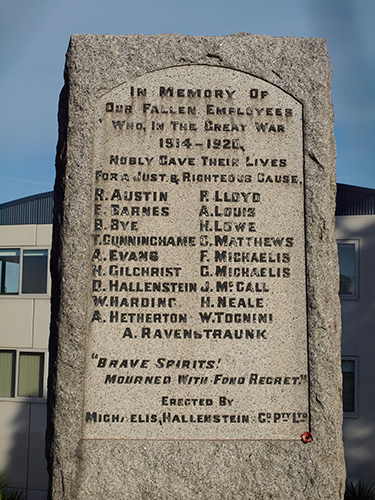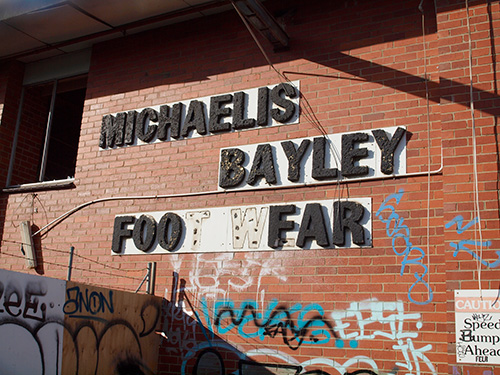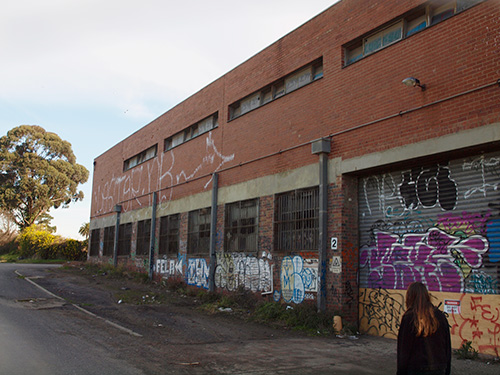Tannery
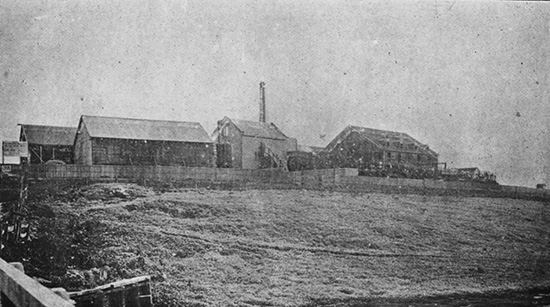
The unremarkable group of townhouses and flats on the corner of Hopkins Street and Moreland Street, Footscray, replaced what was once one of Footscray’s and Australia’s largest establishments, the Michaelis, Hallenstein Tannery, later known as Michaelis Bayley. The tannery had also been described as the largest of its kind in the Southern Hemisphere.
The story goes that in 1864 a young bullock driver, Issac Hallenstein, had trouble with his wagon on Footscray Hill, on the western bank of the Maribyrnong River, and sought help from a tannery there. The owner of the tannery, Mr Cleghorn, was keen to go to the gold diggings and so he sold the tannery to Isaac Hallenstein. Young Isaac was soon joined by his uncle, Moritz Michaelis, and so began the story of this extensive and remarkable tannery.
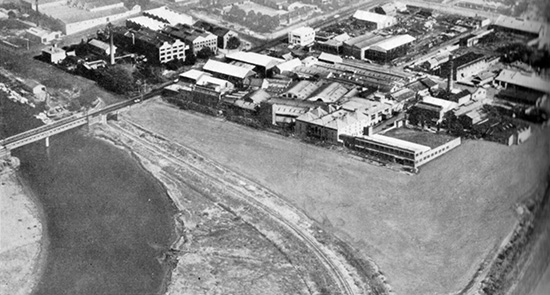

The company produced a range of simple basic leather goods, such as leather for soles and uppers of shoes, suitcases and upholstery. The quality was good and the company won a number of medals for its products.
Of particular note was Michaelis Hallenstein’s participation in the local community by the founder’s families. This seems to be partly a feature of the late nineteenth and early twentieth century in general but it is certainly true of the early Footscray industrial community. The families were involved in the local Rotary Club, the Technical College and the Hospital.
This community involvement extended to the great sacrifices made by communities in WW1. This close involvement is recorded in a monument to 19 employees of the company who paid the supreme sacrifice in the First World War. Three of the names on the monument are from the founders’ families, Michaelis and Hallenstein. This monument still stands on the edge of Hopkins Street on the Hopetoun Bridge.
Footscray’s First 100 Years says Michaelis Hallenstein was believed to be the first large organisation in Australia to introduce the eight-hour day for employees.
